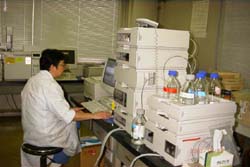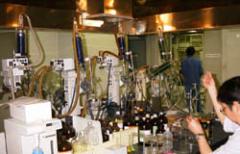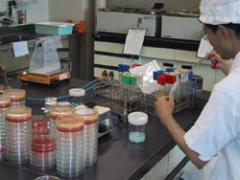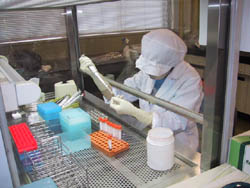- Yokohama-shi Top Page
- Health, Medical Care and Welfare
- Health and Medical Care
- Food safety
- Food Sanitation Laboratory
- Outline of Food Sanitation Laboratory
- Food testing and inspection and GLP
Here's the text.
Food testing and inspection and GLP
Last update date April 2, 2024
About food testing and inspection
Food Sanitation Law stipulates various standards and standards for food products. We conduct tests and inspections on foods distributed in the market to determine whether these standards and standards are met.
Test inspections will be conducted systematically, taking into account the timing of food distribution, etc., and if a food suspected of violating is found during monitoring, a test inspection will be conducted immediately. We also conduct tests and inspections of foods that have become social problems, such as safety concerns.
As a result of the inspection, if a food that seems to have a hygiene problem, foods that do not conform to the component standards, or foods that are incorrectly labeled, notify the production area, prohibit food sales, disposal, etc. Take necessary measures.
Scientific inspection
Inspection of pesticide residues

Inspection scenery
We inspect whether the pesticides used does not exceed the standard.

Inspection scenery
We inspect whether food colorings, preservatives, and mold preventive agents are used in the correct application and quantity, and whether the additives used are correctly displayed.
Toxic tests (shell poison, blowfish poison)
We test bivalves paralysis poison, diarrheal shellfish poison and blowfish poison.
We mainly conduct tests for antibacterial substances, mercury, histamine, etc.
Bacterial testing
Pollution indicator bacteria test
We check the degree of bacterial contamination by food by examining the number of general bacteria, the number of coliform bacteria, and the presence or absence of Escherichia coli.

Inspection scenery
We test food poisoning bacteria such as Vibrio parahaemophilia, Staphylococcus, and Salmonella.

Inspection scenery
In winter, we conduct tests for norovirus by genetic analysis, mainly for raw oysters.
Kudoa septenpuncttatata, which is mainly parasite of flounder, is tested by gene analysis using microscopes and real-time PCR.
About GLP
In order to ensure the accuracy and reliability of inspections, standard work documents have been established for inspection plans, implementation, records, reports, etc. at inspection stations, and inspections are carried out based on these standards.
This concept is called GLP (Good Laboratry Practice), and the Food Sanitation Laboratory has taken the following measures.
- A series of inspections are performed based on standard work documents, from removal (sampling) of food to issuance of inspection result notices are performed based on standard work documents.
- We have appointed an inspection department manager and a person in charge of inspection division at the laboratory, and a person responsible for ensuring reliability at Yokohama City Inst. of Health.
- The Quality Management Department checks and checks whether the inspection work was carried out without deviation from the standard work document, and whether the handling of measuring instruments and chemicals was appropriate.
- We participate in external accuracy control surveys several times a year by external organizations. In addition, internal accuracy control is performed by our own inspection department.
For inquiries to this page
Medical Care Bureau Health and Safety Department Central Wholesale Market Home Food Sanitation Laboratory
Phone: 045-441-1153
Phone: 045-441-1153
Fax: 045-441-8009
Email address: ir-honjo@city.yokohama.jp
Page ID: 140-568-549







